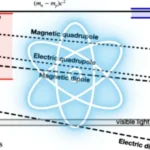Key Points:
- Intuitive Machines achieves the first American lunar landing since the Apollo era with its Nova-C cargo lander, “Odysseus.”
- Odysseus is the first U.S. spacecraft to land on the moon since 1972 and marks the first moon landing by a private company.
- The mission, part of NASA’s CLPS initiative, carries 12 payloads, six under a $118 million contract with NASA.
- The achievement contributes to the ongoing geopolitical race to the moon, with various nations and private entities investing in lunar programs.
Houston-based company Intuitive Machines achieved a historic milestone with the successful landing of its Nova-C cargo lander, “Odysseus,” on the lunar surface on Thursday evening. This marks the first American lunar landing since the Apollo era, and notably, Intuitive Machines is the first private company to accomplish a moon landing, a feat previously carried out solely by government agencies.
“Odysseus,” named after the mythological Greek hero, is the initial U.S. spacecraft to touch down on the moon since 1972. The successful mission underscores a significant achievement in space exploration, showcasing advancements in the capabilities of private companies.
Intuitive Machines’ CEO, Steve Altemus, conveyed the historic moment from mission control, stating, “We are on the surface, and we are transmitting. Welcome to the moon.” The mission control team experienced a brief delay before confirming the success due to the expected gap between landing and communication re-establishment.
Despite the delay, Intuitive Machines confirmed the lander’s successful touchdown, with Tim Crain, CTO, and IM-1 mission director, stating, “What we can confirm, without a doubt, is that our equipment is on the surface of the moon and we are transmitting. So congratulations, IM-1.”
The Nova-C cargo lander, measuring about 14 feet tall and resembling the size of an SUV, stood on end and initiated a series of maneuvers, including “Descent Orbit Insertion,” approximately one hour before landing. The landing occurred in the “Malapert A” crater, approximately 300 kilometers from the moon’s south pole.
Intuitive Machines plans to operate Odysseus on the lunar surface for up to seven days following the successful landing. The mission launched on a SpaceX rocket on February 15, carries 12 government and commercial payloads, six of which are part of a $118 million contract with NASA.
While NASA emphasized that IM-1 is an Intuitive Machines mission, not a NASA mission, it falls under NASA’s Commercial Lunar Payload Services (CLPS) initiative. This initiative aims to facilitate regular lunar missions for scientific projects and cargo to support NASA’s Artemis crew program.
Intuitive Machines’ achievement is part of a broader global effort in lunar exploration. Last month, Japan became the fifth country to land on the moon, joining the ranks of Russia, the U.S., China, and India. The lunar endeavors reflect a modern moon race, with multiple nations and private companies investing in lunar programs. NASA anticipates additional missions by U.S. companies this year, while China plans to launch its next lunar lander in May.












